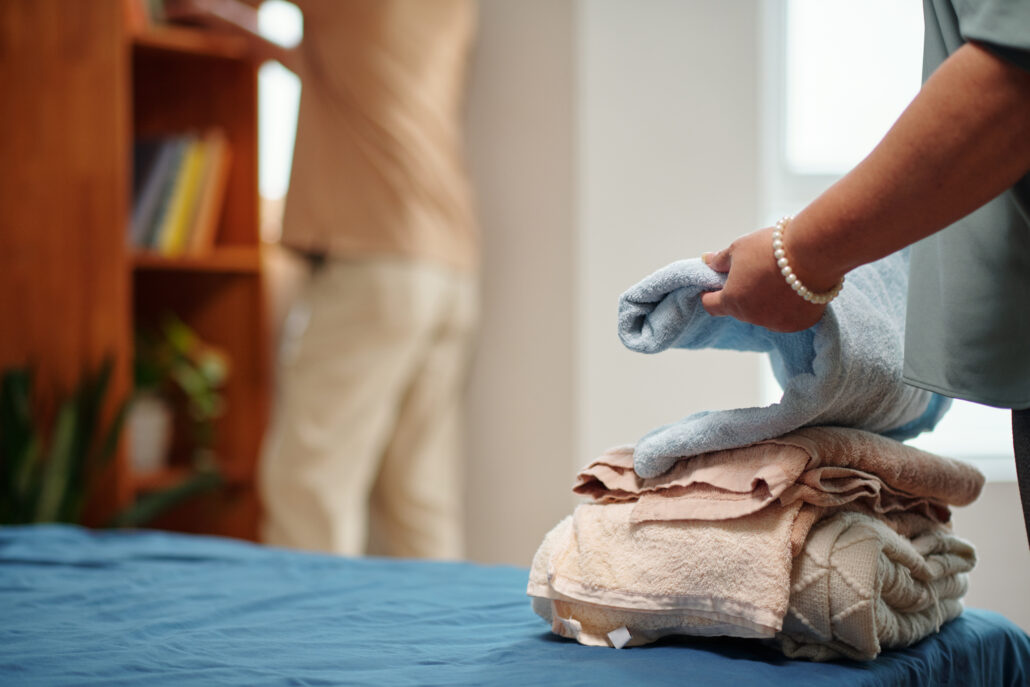
While the excitement of going back to school fills the air—new classes, new friends, and new things to learn—it’s important to recognize that for many kids, major shifts in routines can lead to some sleep challenges. Fear not; the Better Sleep Council is here with a treasure trove of back-to-school sleep hygiene tips to help your kids snooze through this transition with well-rested minds and energized bodies.
10 Sleep Hygiene Tips for Kids Going Back to School
Good sleep hygiene plays a role in helping children smoothly transition from the ease of summer break to the demands of the school routine. Beyond the typical sleep hygiene for kids recommendations, like a consistent bedtime routine and screen-time limits, here’s a handy list of sleep hygiene tips to help your kids enjoy the benefits of quality sleep:
- Make Healthy Nutrition Choices: Avoid heavy meals, caffeine, and sugary snacks close to bedtime. A balanced diet supports overall health and contributes to better sleep quality.
Learn more about what to eat for better sleep.
- Balance Activities and Sleep: Craft a structured routine that allows time for extracurricular activities, homework, and plenty of restorative sleep. Striking a balance prevents overexertion and supports healthy sleep patterns.
- Establish Effective Homework Management: Set dedicated study time earlier in the evening to steer clear of late-night cramming. Prioritizing sleep while establishing a study routine enhances learning and cognitive function.
Check out our blog on managing homework and bedtime routines.
- Set Morning Sunlight Exposure: Expose children to the natural sunlight of early mornings to regulate their circadian rhythm. This exposure supports alertness during the day and ensures better sleep at night.
- Keep a Sleep Journal: Encourage your child to track their sleep patterns in a journal. They can jot down when they go to bed, when they wake up, and if there were any interruptions during the night. This sleep journal will provide an opportunity for you to work together, helping your child notice any patterns and brainstorm ways to improve their sleep.
- Curb Afternoon Naps: If naps are necessary, tailor them to your child’s age. For elementary school kids, opt for shorter naps of around 20-30 minutes in the early afternoon. As children move into middle school, consider adjusting naps based on their individual needs. However, in high school, it’s generally best to avoid naps during the day, as they can disrupt the ability to fall asleep at night and impact the sleep schedule. This approach ensures that naps provide a quick energy boost without compromising nighttime sleep.
Learn the “under the covers” truth about napping.
- Create an Optimal Sleep Environment: Create a sleep-conducive bedroom, thoughtfully designed with a comfortable mattress and cozy bed accessories, set at a suitable room temperature and with minimal noise. A serene sleep environment significantly enhances the overall quality of your rest, allowing you to wake up feeling refreshed and ready to take on the day.
Explore 10 Tips for Creating a Sleep-Friendly Dorm Room
- Prioritize Physical Activity: Regular physical exercise during the day can contribute to better sleep at night. Encourage your child to engage in activities they enjoy, whether it’s playing sports, riding bikes, or going for a family walk around the neighborhood. By incorporating movement into their daily routine, they not only promote healthy sleep patterns but also enhance their overall well-being.
- Teach Effective Stress Management: Equip children with stress reduction techniques like progressive muscle relaxation (slowly tensing and relaxing each muscle, one group at a time) or guided imagery. Managing stress can help prevent racing thoughts that make it difficult to fall asleep at night.
- Wind-Down with Mindful Breathing: Introduce deep-breathing exercises, like mindful breathing, as part of their nighttime wind-down routine. These exercises not only help in relaxation but also pave the way for a more restful sleep. Encourage them to take a few moments to focus on their breath and let go of any lingering stress or worries from the day, creating a calm and serene mindset for a peaceful night’s rest.
Reimagine your own nighttime routine.
Goodnight
As the school bell rings and backpacks are loaded with books and supplies, these sleep hygiene tips will help your children tackle the new and exciting changes of going back to school with energy and enthusiasm.
Remember, the effectiveness of these healthy sleep habits can vary depending on your child’s age, preferences, and individual needs. Experiment with different strategies to determine what works best for your child and their routine.



